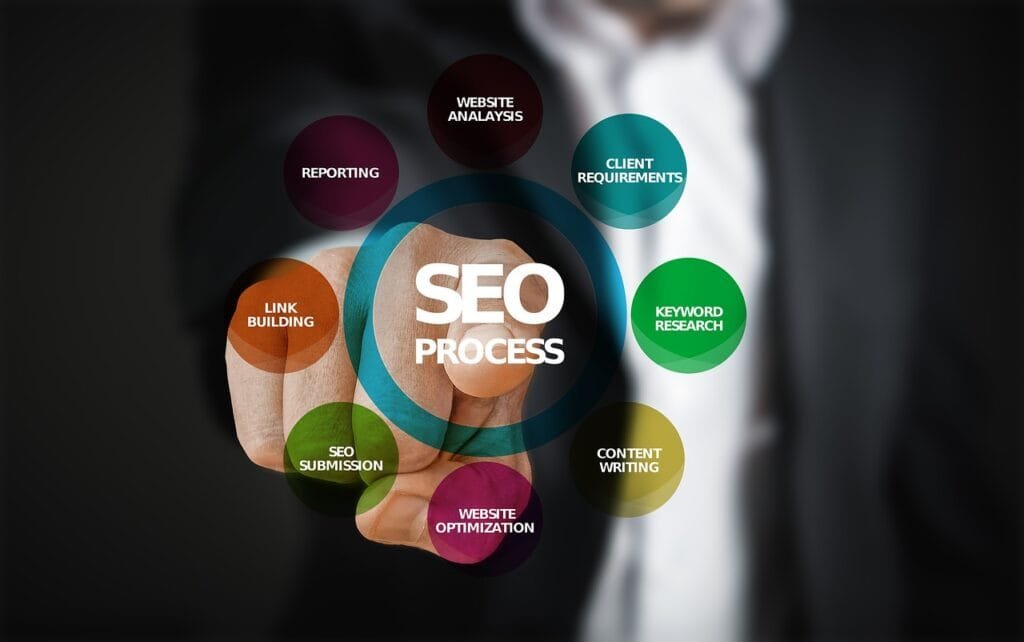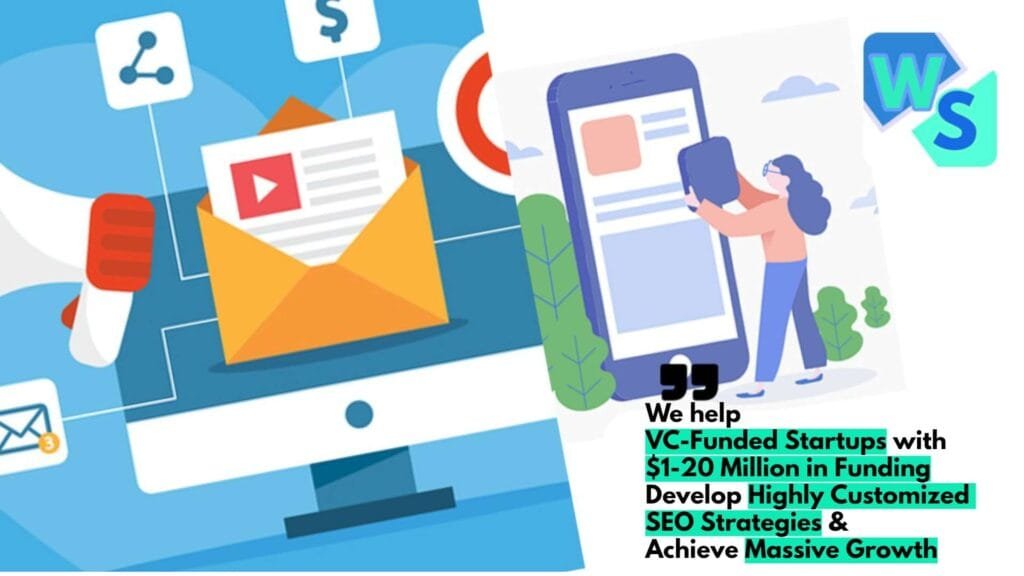Real Estate Marketing Analytics
Real estate marketing analytics is your secret weapon for cracking the code of online marketing for realtors, brokers, and developers. By diving into website traffic and conversion rates, these pros can pinpoint what needs a boost, leading to more eyeballs and, hopefully, more sales.
Website Traffic Analysis
Website traffic is basically the heartbeat of any online real estate marketing plan. It shows how many folks are landing on a site, giving insights into who’s interested in those properties up for grabs. Understanding where traffic comes from helps real estate gurus know if social media or search engines are pulling their weight.
| Traffic Source | Percentage of Visitors |
|---|---|
| Organic Search | 39% |
| Paid Search | 18% |
| Social Media | 16% |
| Direct Traffic | 21% |
| Referral Traffic | 6% |
Stats point out that organic search is driving 300% more traffic than social media. That’s why it’s crucial (oops, important) to nail down a strategy for drawing visitors. Siteimprove suggests beefing up your SEO for real estate websites not just to pull in numbers, but get people who might actually buy a place.
Conversion Rate Optimization
In plain speak, conversion rates show how a website pulls a Houdini, turning visitors into leads. A green-light conversion rate means the website’s doing a bang-up job at getting folks to do what you want—like hitting that ‘contact us’ button or signing up for more info.
| Conversion Rate Range | Percentage of Realtors |
|---|---|
| 0% – 2% | 20% |
| 2% – 4% | 50% |
| 4% – 6% | 20% |
| 6% and above | 10% |
The average conversion rate in real estate hovers around 4.7%, but some are hitting highs near 12.0% Ruler Analytics. Tweaking things like website design, rolling out smart real estate marketing strategies, and having clear buttons encouraging action can pump up those conversion rates in no time.
Mixing a solid SEO backbone with sharp conversion touchpoints is key to winning online marketing. With this combo, real estate businesses can rake in profits while effectively connecting with the right folks.
Lead Generation Strategies
In real estate marketing analytics, nailing smart lead generation strategies is what sets the ball rolling for sales and visibility. This part takes a good look at two main things: figuring out the cost per lead and getting a handle on return on investment.
Cost per Lead Evaluation
Cost per lead (CPL) is like the bread and butter in real estate marketing. It spells out how cost-effective the marketing moves are. Calculating how much it costs to get each lead helps realtors, brokers, and those folks building properties see if their marketing plans are hitting the mark. Knowing this cost means businesses can toss their cash at the right things and make their marketing sizzle (LinkedIn).
| Marketing Channel | Estimated Cost per Lead ($) |
|---|---|
| Social Media Advertising | 200 – 300 |
| Email Marketing | 100 – 200 |
| Pay-Per-Click Advertising | 250 – 500 |
| Organic Traffic | 50 – 150 |
As you see in the table, different channels come with their own price tags. Take social media ads—they often cost more than organic traffic, which can bring in leads for less cash.
CPL isn’t just some random number for real estate marketers—it’s like a north star for grabbing leads with marketing (Luxury Presence). By keeping an eye on and tweaking CPL, pros can stay inside their budgets while cranking up the lead machine.
Return on Investment Measurement
Measuring return on investment (ROI) is the other biggie when you’re weighing up lead generation plans. Knowing how much cash each marketing channel rakes in helps real estate pros pinpoint what’s really bringing home the bacon.
ROI Calculation:
[
\text{ROI} = \frac{\text{Net Profit}}{\text{Investment}} \times 100
]
Real estate marketers plug this formula into the mix to see which campaigns fly high. Look at this:
| Campaign | Investment ($) | Revenue Generated ($) | Net Profit ($) | ROI (%) |
|---|---|---|---|---|
| Social Media Ads | 1,000 | 5,000 | 4,000 | 400 |
| Email Marketing | 500 | 1,400 | 900 | 180 |
| Pay-Per-Click Advertising | 2,000 | 3,500 | 1,500 | 75 |
Peeking at the table makes it clear—social media ads bring in some serious ROI, proving this channel’s worth.
Even though email marketing doesn’t bring home as much ROI, it’s still a powerhouse in keeping potential buyers engaged, even if they’re not buying right away (Ruler Analytics). By tuning into insights from ROI checks, real estate pros can fine-tune their game plan and lock onto the juiciest ways to snag leads.
For more about bumping up your visibility and trust with snappy digital tricks, swing by our digital marketing for real estate section.
Targeting Millennials in Real Estate
Why Tech Skills Matter
In the world of U.S. home buyers, millennials are now front and center, outpacing other generations. This shift means real estate agents gotta step up their game and tap into the tech-friendly habits of this group. These digital natives aren’t just comfortable online—they thrive there, diving into research and buying decisions.
Millennials want their online experiences smooth and easy. Whether it’s scoping out property details, taking a virtual look-see, or sealing the deal online, they expect it all. So, marketers gotta hit the right notes with these digital habits. Knowing the ins and outs of these trends is a must-do to grab the attention of this ever-ready audience.
Connecting with Millennials
When courting millennials, it’s all about hitting the right vibes. Check out these straightforward ways to make it happen:
Get Social Online: Research says 58% of folks are willing to pay extra to collaborate with someone who’s got a solid personal brand. This is where social media shines for agents Housing Wire. Putting yourself out there on Instagram and Facebook isn’t just about likes and shares; it’s about making genuine connections with home-seekers.
Serve Up Quality Content: Giving millennials what they wanna know is the name of the game. Think blogs on real estate marketing strategies, eye-catching property videos, or guides for newbie home buyers. The goal? Keep it real and engaging to hold their interest.
Keep It Real with Your Brand: Millennials dig honesty. They prefer down-to-earth stories over fancy corporate speak. Sharing real-life client tales and wins can up your trust game with this crowd.
Dive into Digital Marketing: Techniques like email marketing in real estate and kicking up your SEO can boost your visibility. These tactics cater to what millennials like—personal touches and ads that speak their language.
Offer a Virtual Visit: Virtual tours fit right into the busy schedules and tech-savvy lives of millennials. It gives them the comfort of checking out properties without having to be there in person.
Bringing these strategies into play helps realtors and brokers make meaningful connections with millennials, boosting their presence in the real estate scene. Knowing what makes this group tick ensures better marketing results and success in closing those deals.
Boosting SEO in Real Estate Marketing
In the zone of real estate marketing, getting cozy with search engine optimization (SEO) is the way to pump up your website’s traffic and turn those visitors into actual leads. If you’re a realtor, broker, or property developer, don’t sleep on SEO. It’s the real MVP of your marketing game plan.
The Magic of SEO on Website Traffic
Your website traffic paints a clear picture of how you’re doing online in the real estate game. Think of those visitor numbers like a popularity vote. Nail your SEO, and you’ll not only get more eyes on your page but you’ll attract folks who actually want what you’re selling (Siteimprove). Fun fact: Organic search can pull in around 300% more traffic compared to social media—making it your best buddy in the quest for website fame. Plus, organic traffic tends to bring the best bang for your buck when it comes to digital marketing (Siteimprove).
| Traffic Source | Estimated Traffic Percentage |
|---|---|
| Organic Search | 50% – 70% |
| Social Media | 10% – 20% |
| Direct Traffic | 15% – 25% |
| Referral Traffic | 5% – 15% |
If you play your SEO cards right, you’ll see a decent uptick in qualified traffic—a fancy way of saying more potential clients are checking you out. Keeping an eye on traffic from organic sources gives you a heads-up on how well you’re doing with your SEO efforts (Luxury Presence).
Why You Can’t Skip Quality SEO Content
Good SEO content is like that secret sauce for making your real estate biz the go-to expert, which helps you earn the trust of future clients. Building this trust boosts brand recognition and ups your chance of turning interest into actual sales. The real estate crowd wants stuff that’s helpful, interesting, and easy to find. When they feel like they know and like you, they’re more likely to jump on board with what you’re offering (Siteimprove).
Here’s the playbook for killer SEO:
- Use of Keywords: Scatter those relevant keywords throughout your content to catch the eye of those search engines.
- Regular Updates: Keep refreshing your content to invite back the regulars and climb the ranking ladder.
- User Experience: Make sure your website is a breeze to navigate so folks can find what they need without any hassle.
Focusing on top-notch SEO content can really amplify your online game, stepping up your visibility and hook rates. For more tips on upping your digital marketing game, check out our guides on real estate marketing strategies and digital marketing for real estate.
Gen AI in Real Estate
Generative AI (Gen AI) is like a secret weapon for real estate, turning chaos into order by boosting efficiency and shaking up how things are usually done.
Getting Stuff Done Faster
Think of Gen AI as the magic hat, pulling out $110 billion to $180 billion worth of potential savings and gains for real estate worldwide. A number of real estate companies have seen their profits shoot up by more than 10% just by revamping how they do things and keeping their clients happy. It’s like getting more bang for your buck — happier tenants, smarter investments, and a nice little bump in extra cash flow.
With AI jumping into the scene, real estate folks can shave off unnecessary expenses and keep their pockets fuller. By making decisions based on solid digits and data, they’re not just surviving but thriving in a competitive market.
| Benefit | What It Feels Like |
|---|---|
| More Profit | More than 10% boost with snazzy new ways of working. |
| Happy Tenants | Keeping tenants around because they love the vibe. |
| Wise Investments | Using data to make smart moves in the market. |
Gen AI in Action
Picture this: you’re managing piles of lease papers, and Gen AI swoops in to summarize them all, pulling out key bits and making data ready to use at a glance. That’s a lifesaver when you’re juggling lots of leases and need to know the essential stuff without wading through pages of detail.
Gen AI also taps into IoT sensors and clever algorithms to draft up killer architectural plans, making sure every corner of a space is used just right. By watching how people move and act, it crafts spaces that work like a charm.
Real estate peeps can push Gen AI to build virtual reality experiences where prospective tenants can wander through their dream spaces. It’s like window shopping but better, nudging them from just looking to really signing that lease. With such smart tech, businesses can align their spending decisions with what folks are actually wanting and craving in the market.
Gen AI breaks the mold, making things run smoother and bringing in fresh ways to earn and connect with clients. If you’re curious about how to make your real estate game visible to the world, check our tips on digital marketing for real estate.
Effective Search Marketing
Search marketing can be a game-changer for real estate folks looking to boost their online presence and raking in those sales. Let’s check out how organic search and paid search stack up, plus get the scoop on conversion rates for different channels.
Organic vs. Paid Search Traffic
When it comes to driving traffic, both organic and paid search pack a punch for real estate websites, roping in about 57% of all visitors (Ruler Analytics). Knowing the ins and outs of these two heavyweights lets realtors and property wizards fine-tune their strategies.
Key Differences
| Criteria | Organic Search | Paid Search |
|---|---|---|
| Average Conversion Rate | 3.2% | 1.5% |
| Time to Results | Takes a bit longer to shine | Hits the ground running |
| Cost | Free as a breeze (think SEO) | Pay-per-click in the ad game |
| Traffic Quality | Solid and steady | High intent, but might cast a wide net |
Organic search is a marathon, not a sprint. It’s tough, but it pays off with long-haul wins like beefing up authority and reeling in traffic for free. Paid search? It’s your fast pass to the spotlight, but it might burn through your budget to hit those sweet conversion rates.
Conversion Rates for Different Channels
Conversion rates are a mixed bag across channels. Cracking this code is gold for real estate pros aiming to up their marketing smarts and ROI.
| Channel | Average Conversion Rate |
|---|---|
| Organic Search | 3.2% |
| Paid Search | 1.5% |
| Top Performers | Up to 12.0% |
While the industry norm sits at about 4.7% for conversion rates, the top dogs pull in up to 12.0% (Ruler Analytics). It underscores the value of smart, targeted marketing strategies.
Mixing it up with both organic and paid search tricks can ratchet up your visibility and sales numbers. By tapping into real estate marketing strategies, you can sharpen your campaigns for more action and better results.
Social Media Marketing Strategies
Getting the word out on social media isn’t just a good idea for real estate folks—it’s a must. Facebook, Instagram, and LinkedIn can seriously hype up your brand and boost sales.
Building a Personal Brand
Having your own brand in real estate is a big deal. Almost 58% of people would rather pay more to work with someone who’s got a solid personal brand than a big-name company (Housing Wire). It’s all about having an online vibe that clicks with your clients.
So, how do realtors nail that personal brand? Focus on:
- Being Real: Sharing personal wins, and yes, even those moments things didn’t go perfect. It’s all about keeping it real and building trust.
- Sticking Around: People remember if you’re always showing up on social media.
- Chit-Chat: Jump into conversations with followers using comments, direct messages, and regular updates. Make it feel like a little online community.
Make stuff your future clients can’t get enough of. Know what they like and share posts that get them interested (Housing Wire).
Compelling Content Creation
Making great content is like the secret sauce for social media. Show off houses but also throw in some useful tips for those looking to buy. For killer content:
- Smart Posts: Share advice on buying a home, hot market trends, and financing options. People eat that stuff up.
- Eye Candy: Great pictures and videos are a must. Check out real estate video marketing for spicing up property showcases.
- Fan Contributions: Get folks who’ve bought from you to post their stories and photos. It’s like instant trust points.
Mix up your content to keep folks interested. Talking about real estate affiliate marketing programs or success tales can make your posts relatable and chat-worthy.
In a nutshell, focusing on a personal brand and crafting catchy content is key to winning at social media marketing. Real estate pros who do it right can connect deeply with their audience and boost their business like never before.
Real Estate Data Analytics
Making sense of real estate analytics is a must for realtors, brokers, and developers aiming to boost sales and up their game. By zeroing in on data-driven tricks, real estate pros can snag key insights to figure out property values and keep up with market vibes.
Predicting Property Values
Real estate data gives brokers the edge in guessing property prices more on point. By digging into past sale figures of similar pads, brokers help sellers set just-right asking prices. Knowing how the market ticks not only helps sellers price right but also gives buyers a leg up on spotting fair deals (Plecto).
| Property Type | Average Sale Price (Past Year) | Comparable Properties |
|---|---|---|
| 2-Bedroom Condo | $300,000 | 10 |
| 3-Bedroom House | $450,000 | 15 |
| 4-Bedroom House | $600,000 | 8 |
Market Trends Analysis
Getting a grip on market trends with data helps brokers dish out savvy advice on the whens and whys of buying or selling homes. This pep talk is especially spot-on in a crazy and changeable market (Plecto). With a look at seasonal shifts, neighborhood changes, and money matters, realtors can put together a winning playbook that vibes with market moods.
| Market Indicator | Current Trend | Recommended Action |
|---|---|---|
| Interest Rates | Falling | Tell buyers to make a move before rates bounce back up |
| Housing Inventory | Scarce | Suggest sellers list now to grab attention |
| Buyer Demand | Sky-high | Market smartly to lure in potential buyers |
Using analytics lets brokers whip up smarter marketing moves by making connections with customers more personal. This means sorting folks by things like age, likes, and past purchase patterns (Plecto). These plans not only buzz up customer connections but give real estate marketing a nice little boost.
For more ideas on juicing up marketing kicks, take a peek at real estate marketing strategies or digital marketing for real estate.
Website Engagement Metrics
If you’re in real estate, cracking the code on website engagement metrics is where it’s at. These little nuggets of info spill the beans on how folks are getting cozy with your online digs. Whether they’re sneakin’ a peek, hanging out, or clicking away, you gotta know. Dive into these numbers and you’re looking at a goldmine that can ramp up your site’s pulling power for leads and turning clicks into clients (HubSpot).
Understanding Visitor Behavior
Want to know what makes your audience tick? This is your treasure map to finding out. The way people maneuver around your site, and what grabs their eyeballs, are all you need to know. Let’s break down a few show-stoppers here:
| Metric | Description |
|---|---|
| Bounce Rate | The percentage of folks who wander in, then bolt after just one page. A sky-high rate can mean the landing page missed the mark on appeal. |
| Average Session Duration | How long visitors are kicking back on your site, hinting at how hooked they are with what you’re offering. |
| Pages per Session | The number of pages poked through in one sitting, shedding light on how well your site keeps ‘em looking around. |
Real estate marketers, up your game! When these numbers climb, so does your lead scorecard. Spruce up those landing pages, and watch bounce rates tumble while visitors linger longer. For tips on flipping visitors to leads, scope out our guide on real estate marketing strategies.
Importance of Mobile Optimization
With mobile devices clocking in at 61% of worldwide online traffic in 2024, making your site shine on every screen is a no-brainer (HubSpot). This is your cue to crack the whip on responsive design magic, making your site a smooth operator on anything from pocket-sized gizmos to hefty desktops.
Here’s your rundown for mobile-friendly charm:
| Element | Best Practices |
|---|---|
| Responsive Design | Make sure your site plays nice with all screen sizes, no exceptions. |
| Fast Load Times | Trim down those pics and scripts for speed. Slow sites just won’t do, they’re big turn-offs. |
| User-Friendly Navigation | Straightforward menus and clickables make swiping easy-breezy on touch devices. |
Nail mobile optimization and you’re looking at a bigger, engaged audience. Want to nail this further? Click into our talk on mobile marketing for real estate. Zeroing in on these numbers isn’t just smart, it’s a power move for driving visibility and fattening that revenue line.





















